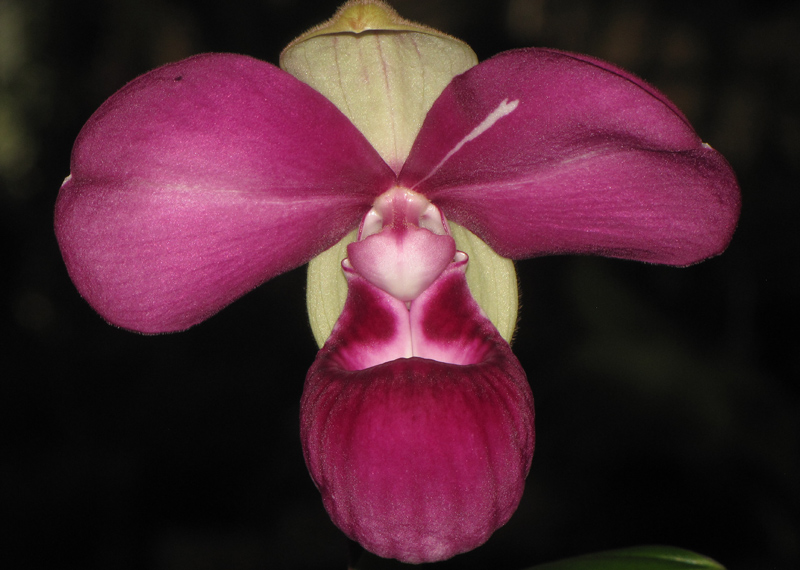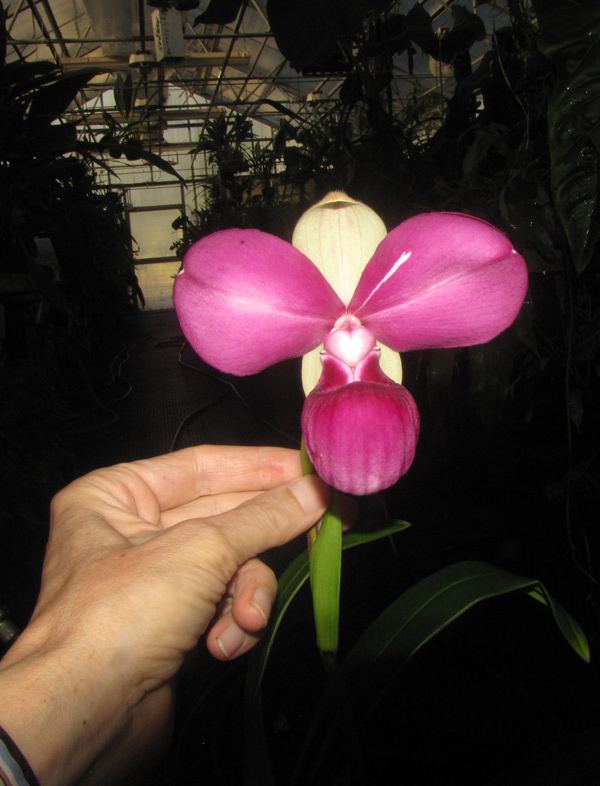The blog of The Huntington Library, Art Museum, and Botanical Gardens.
ORCHID COLLECTION | An Extraordinary Orchid Blooms at The Huntington
Posted on Thu., Jan. 17, 2013 by

A Phragmipedium kovachiibloom at The Huntington.
In 2002, a roadside orchid stand in the Peruvian countryside was the opening scene of one of the most infamous chapters in the history of orchidology. An American orchid collector, Michael Kovach, brought back a slipper orchid he had purchased there. Phragmipedium kovachii was known to a few orchid enthusiasts and believed to be an exceptional discovery before it ever left Peru. The complex story of the plant’s journey from the jungles of South America to the United States, where it was described as new to science and excited the imagination of orchid growers everywhere, is detailed in The Scent of Scandal by Craig Pittman (University Press of Florida, 2012). This story is a modern lesson in ethics, legality, and desire.
In 2007 The Huntington received a generous gift from Suki Nax of five seedlings of P. kovachii. (The plants are certified legally grown, propagated, and exported from a nursery in Lima, Peru.) Each plant soon exhibited its own “personality” marked by differences in vigor, leaf color, and general appearance. One of these plants stood out from the others by its faster rate of growth, and in December 2012 a flower bud emerged from the largest shoot. When it bloomed in early January of this year it revealed itself as one of the glories of the vegetable kingdom. Photographs of P. kovachii in flower have by now been widely circulated, but, like other natural wonders, it must be seen to be fully appreciated.

Our Phragmipedium kovachiibloom with hand for scale.
Early reports indicated that the flower of this species is about eight inches across, easily dwarfing other “phrags” (Phragmipedium species) and most other orchids in overall size. It was also the rich color, like raspberry sorbet, that attracted so much attention. The shape, size, and color of the flowers are variable, as can be seen on an Internet image search. Our plant—pictured here, but currently not on view—produced a flower just over five inches across.
In the wild, P. kovachii grows near the city of Moyobamba, an area famed for the orchids that grow in the surrounding cloud forest. Here it occurs at elevations around 2,000 meters in a specialized niche habitat of limestone cliffs with water percolating through the root zone for most of the year. In cultivation, growers have used a variety of approaches with success, but it is considered a challenging plant to grow and especially to bring into bloom. The flower in the accompanying photos has been hand-pollinated or “selfed” (self-fertilized) in order to grow more plants that will augment the pool of genetic diversity of this marvelous orchid.
Dylan P. Hannon is curator of conservatory collections at The Huntington.